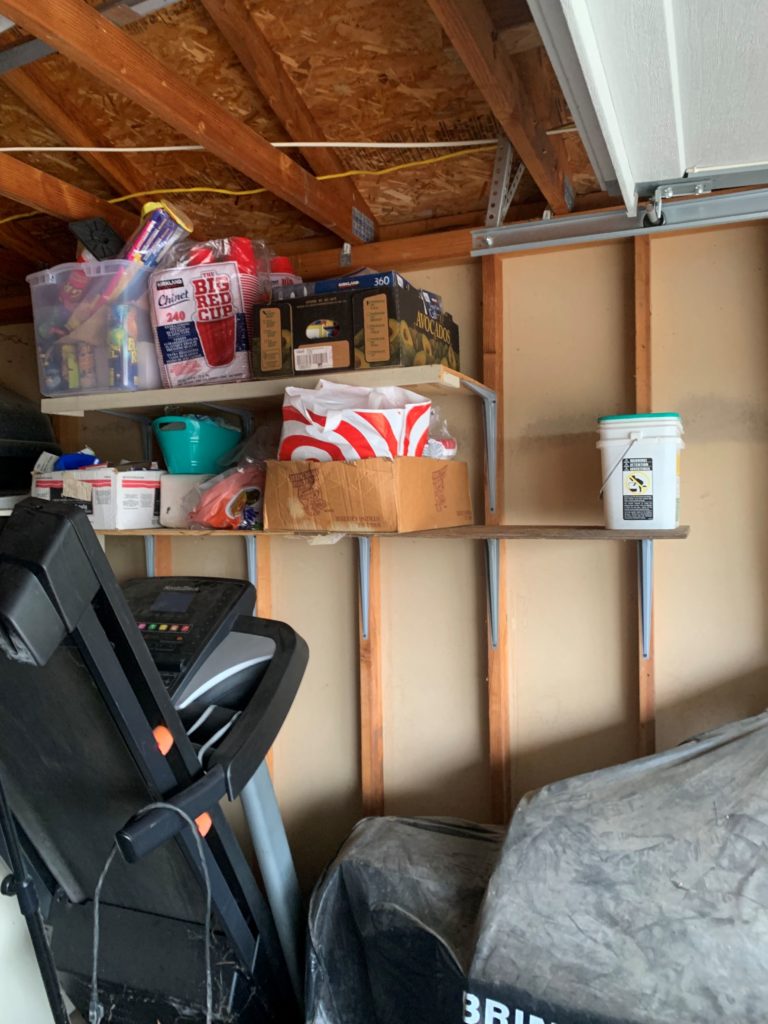A number of years ago, I cobbled a shelf together out of scrap material. The purpose was to organize all of the picnic materials (mostly used with the barbeque). Hence, I hung it above the barbeque in the garage. My first version worked, but it ended up sagging a lot. About three years ago I took it down and re-enforced the sagging shelf.
Something happened while we were in Barcelona. Because when I opened the garage when we got back, I saw the shelf was partially detached from the wall and over half of the items were on the floor. I hastily stacked everything on the floor and subsequently tripped over them and cursed their existence all summer long.
The failure of the old shelf appears that the back, which was nailed into the plywood shelves had separated. Hence, the shelf sort of fell apart. Now, I don’t think it just fell apart on it’s own. but regardless I would say that it wasn’t constructed properly. Any sort of shelf backing, the purpose is really to prevent racking, not necessarily hanging. I am a little surprised that it failed despite realizing the actual weaknesses.
Now that the fall is here and so is the rain, it is time to start shop projects and inside projects. It is also time to stop getting angry every time I try to maneuver in the garage (which is several times a day). I was going to build the shelf that never failed. About a day later, I decided that I was going to get this done as cheaply and quickly as possible.

I was at the local box store and I saw shelf brackets for $4 a piece. I bought four of them thinking I would hang one shelf and try them out. The worst case scenario is that I would save them for some other project later if I thought they were too wimpy. With the World Series on in the background, I set about disassembling the former shelf. I took measurements and pulled nails.
In about two hours, I had the first shelf up and loaded it up with paper plates, Solo cups, aluminum pans etc. I had determined that this was going to be far more cost and time effective to use these brackets rather than buy lumber and build my forever shelves. Over all, I bought 8 brackets (x $4) or $32 plus about four hours total of labor.
The point here is that it kind of offends my sensibilities to use the shelf brackets rather than build something. But, from a standpoint of time savings and even cost, this is no comparison to what I should do. The work is done and the stuff is off the floor after months.
End You Programming Routine: A friend of mine used this term ‘minimal viable product’. What it means is the minimal amount of effort exerted to do the job is the most efficient. This doesn’t necessarily mean do a temporary job, but it also means don’t overthink it. Variables always change in the future and the paradigms of today are not necessarily valid tomorrow. So, trying to futureproof something is often futile.
Recent Comments